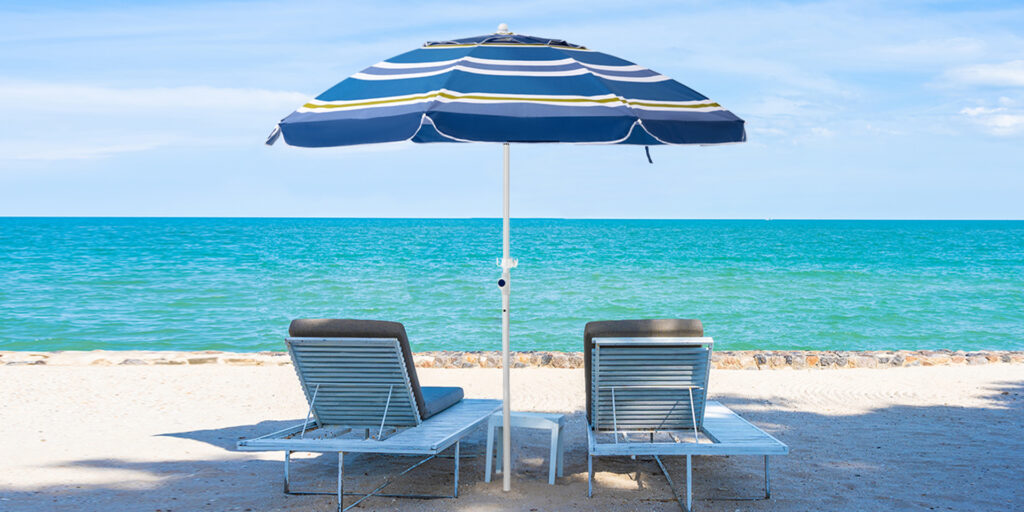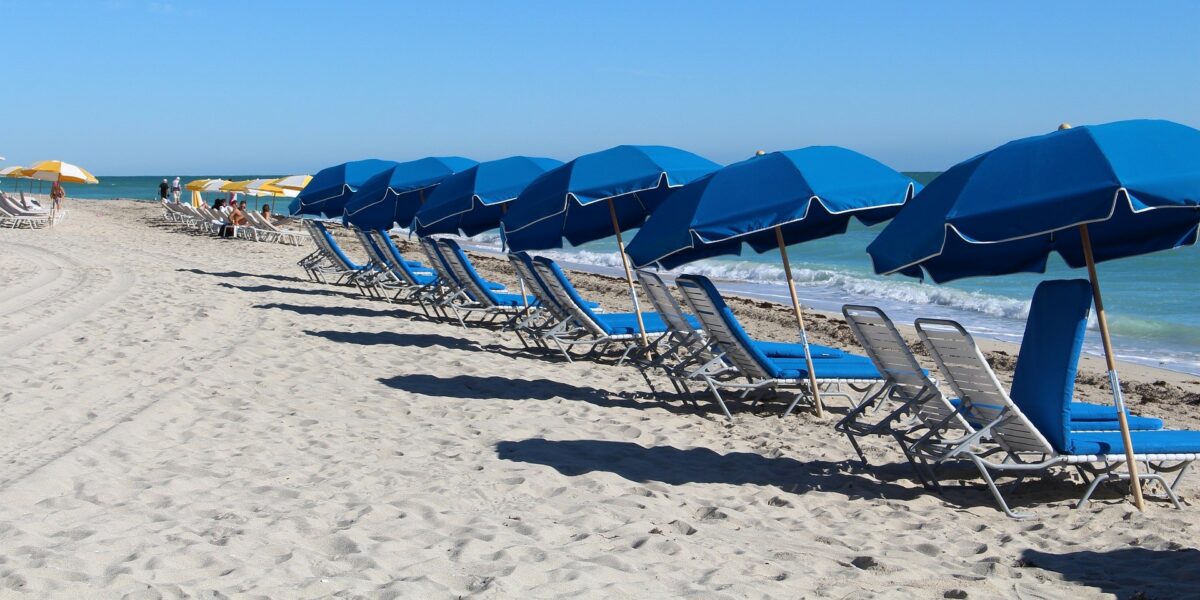Beach umbrellas are a common sight at seaside resorts, providing shade and comfort for beachgoers seeking relief from the sun’s intense rays. However, many people wonder whether these umbrellas offer adequate protection against harmful ultraviolet (UV) radiation.
In this article, we delve into the science behind UV rays, examine how beach umbrellas can mitigate UV exposure, and discuss additional measures for sun safety.
What are UV Rays?
Ultraviolet (UV) radiation is a type of electromagnetic radiation emitted by the sun. It’s divided into three main categories based on wavelength: UVA, UVB, and UVC.
UVA rays have the longest wavelength and can penetrate deep into the skin, contributing to premature aging and skin cancer. UVB rays have a shorter wavelength and primarily affect the outer layers of the skin, leading to sunburn and an increased risk of skin cancer. UVC rays are mostly absorbed by the Earth’s atmosphere and don’t reach the surface in significant amounts.
Understanding UV Protection
UV protection refers to measures that reduce or block exposure to UV radiation. Common methods include wearing sunscreen, protective clothing, and seeking shade during peak sunlight hours. Beach umbrellas are also a popular form of UV protection, but their effectiveness can vary based on several factors.

Can UV Rays Penetrate Beach Umbrellas?
The ability of UV rays to penetrate beach umbrellas depends on various factors such as the umbrella’s material, thickness, and design. Most beach umbrellas are made from materials like polyester, nylon, or canvas, which can provide some level of UV protection by blocking or absorbing UV radiation.
- Material: Polyester and nylon fabrics often have UV-resistant coatings or treatments that enhance their ability to block UV rays. Canvas, while thicker, may still allow some UV penetration depending on its density and color.
- Thickness: Thicker materials generally provide better UV protection than thinner ones. A tightly woven fabric with a higher thread count is more effective at blocking UV radiation.
- Design: The size and shape of the umbrella also play a role. Larger umbrellas with a broader canopy can create a larger shaded area, offering more protection from UV rays. Tilted or adjustable umbrellas allow users to angle the canopy for optimal shade throughout the day.
Factors Affecting UV Protection
- UV Index: The UV index is a measure of the strength of UV radiation at a particular place and time. A higher UV index indicates greater UV exposure and the need for enhanced sun protection, including using a beach umbrella in conjunction with other measures.
- Angle of the Sun: The angle of the sun changes throughout the day, affecting the intensity of UV radiation. For maximum protection, position the beach umbrella to block the sun’s rays effectively, especially during midday when the sun is at its highest point in the sky.
- Reflection: UV rays can reflect off surfaces like sand, water, and even concrete, increasing exposure. Keep in mind that sitting near reflective surfaces may necessitate additional sun protection measures despite being under a beach umbrella.

Tips for Maximizing UV Protection
- Choose a High-Quality Beach Umbrella: Opt for a beach umbrella made from UV-resistant materials and with a broad canopy for ample shade coverage.
- Positioning: Place the umbrella in a way that blocks direct sunlight, especially during peak UV hours (typically between 10 a.m. and 4 p.m.).
- Use Sunscreen: Apply a broad-spectrum sunscreen with a high SPF (Sun Protection Factor) to exposed skin, and reapply regularly, especially after swimming or sweating.
- Wear Protective Clothing: Cover up with lightweight, tightly woven clothing, wide-brimmed hats, and UV-blocking sunglasses for comprehensive sun protection.
- Seek Shade: While beach umbrellas offer shade, it’s essential to seek additional shade from trees, buildings, or purpose-built shade structures when available.

Beach umbrellas can provide significant protection against UV radiation, but their effectiveness depends on factors such as material, thickness, design, UV index, and sun angle. To maximize UV protection, combine the use of beach umbrellas with sunscreen, protective clothing, and smart sun safety practices.
By understanding how UV rays interact with beach umbrellas and implementing proactive measures, beachgoers can enjoy the sun safely and reduce their risk of sunburn and skin damage.
